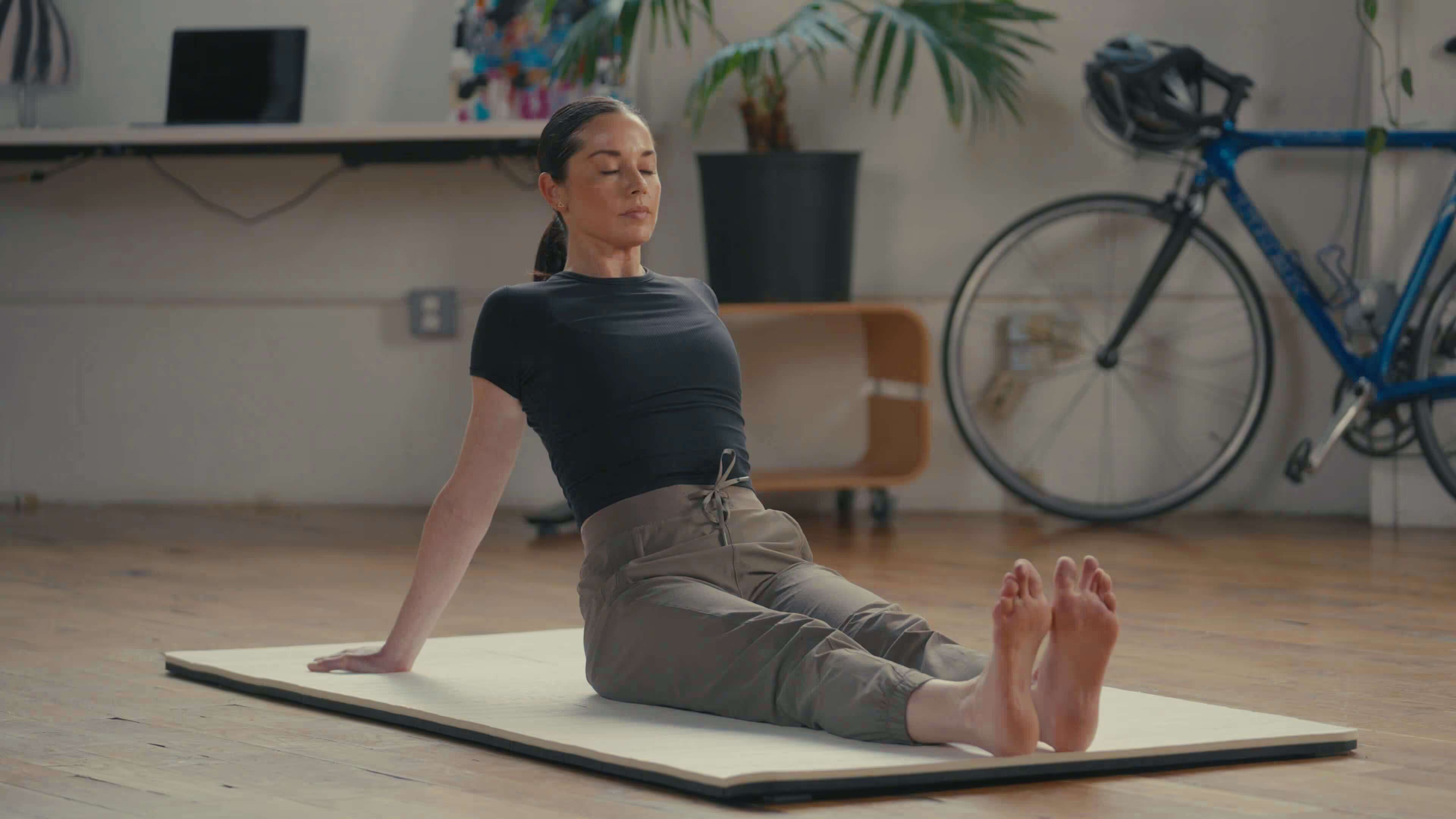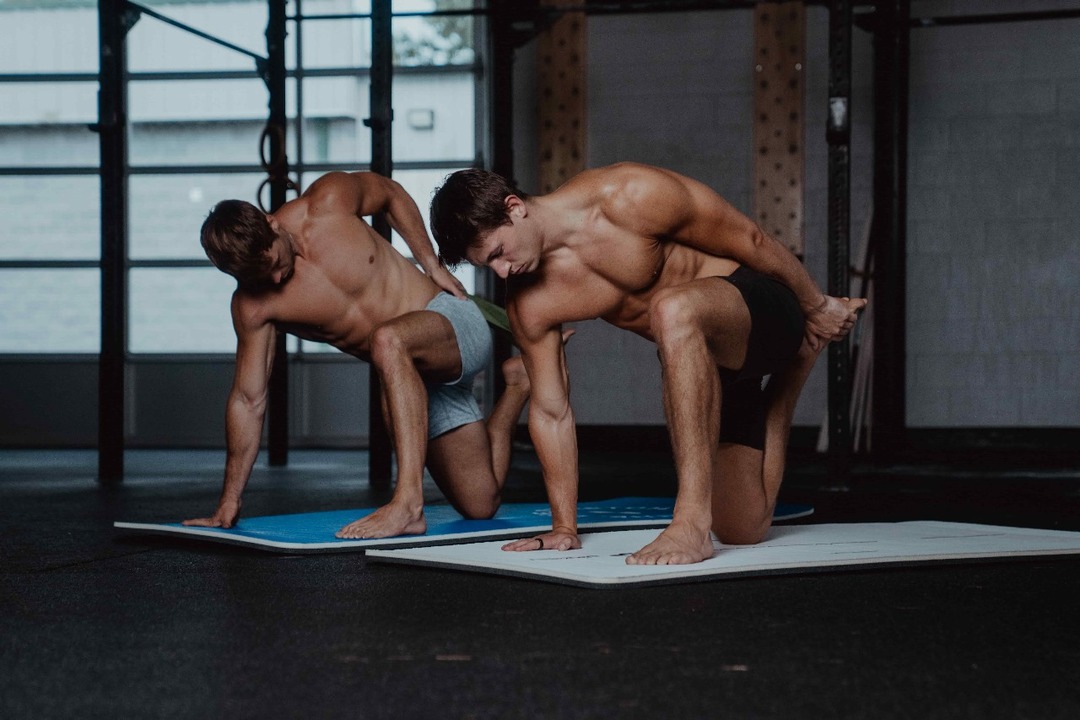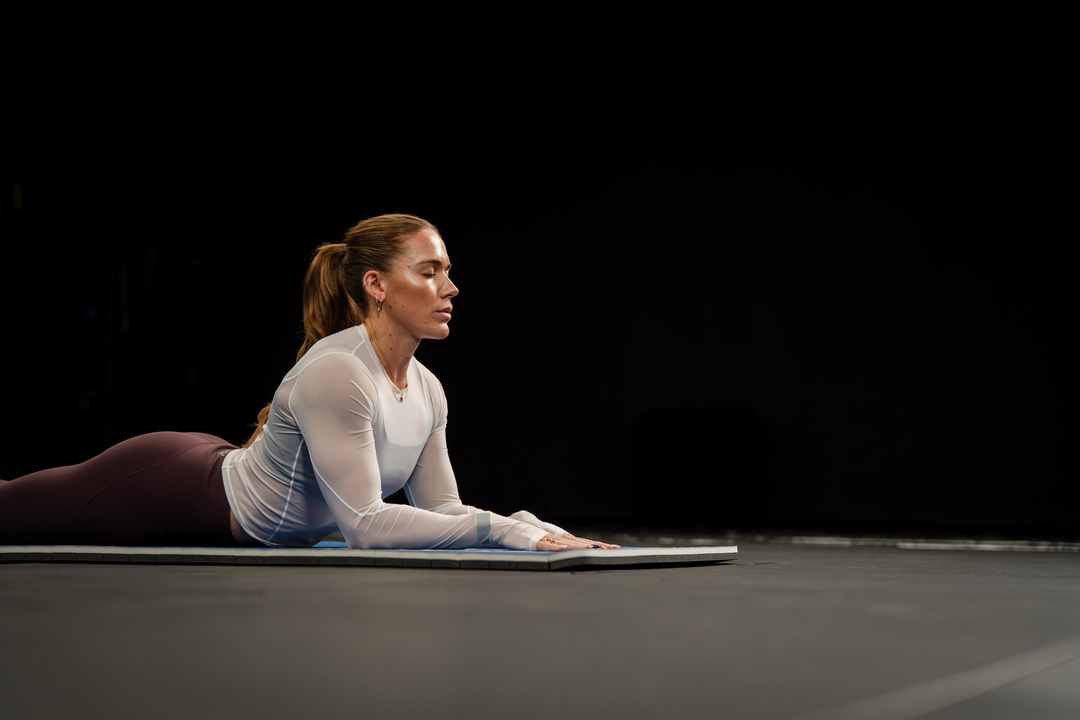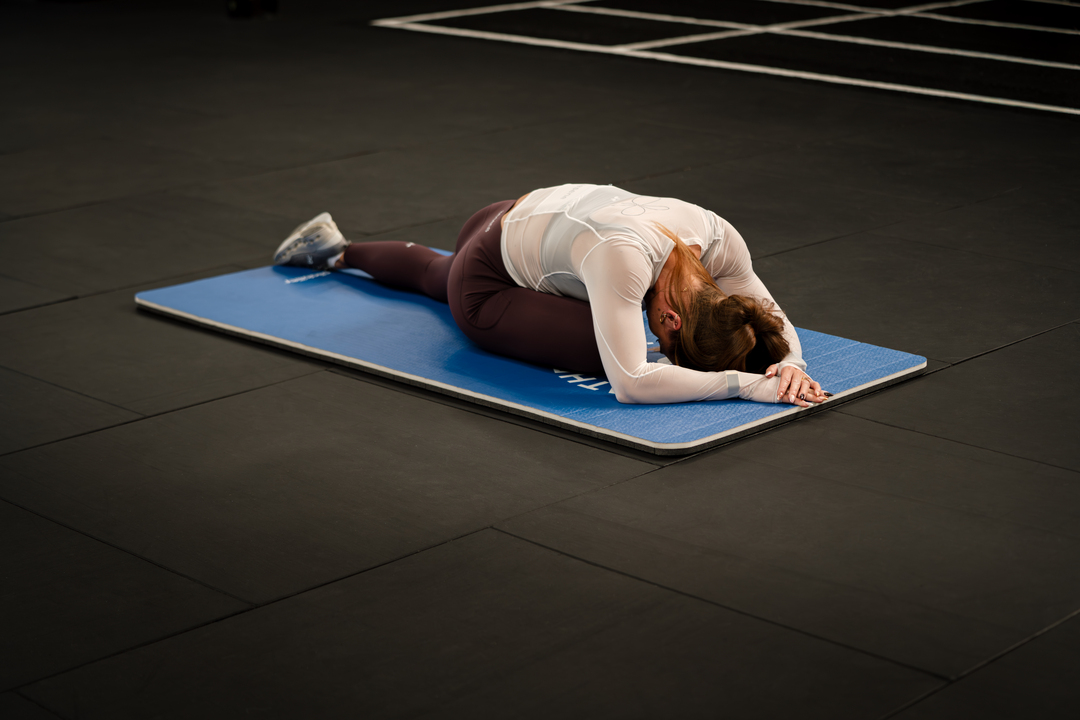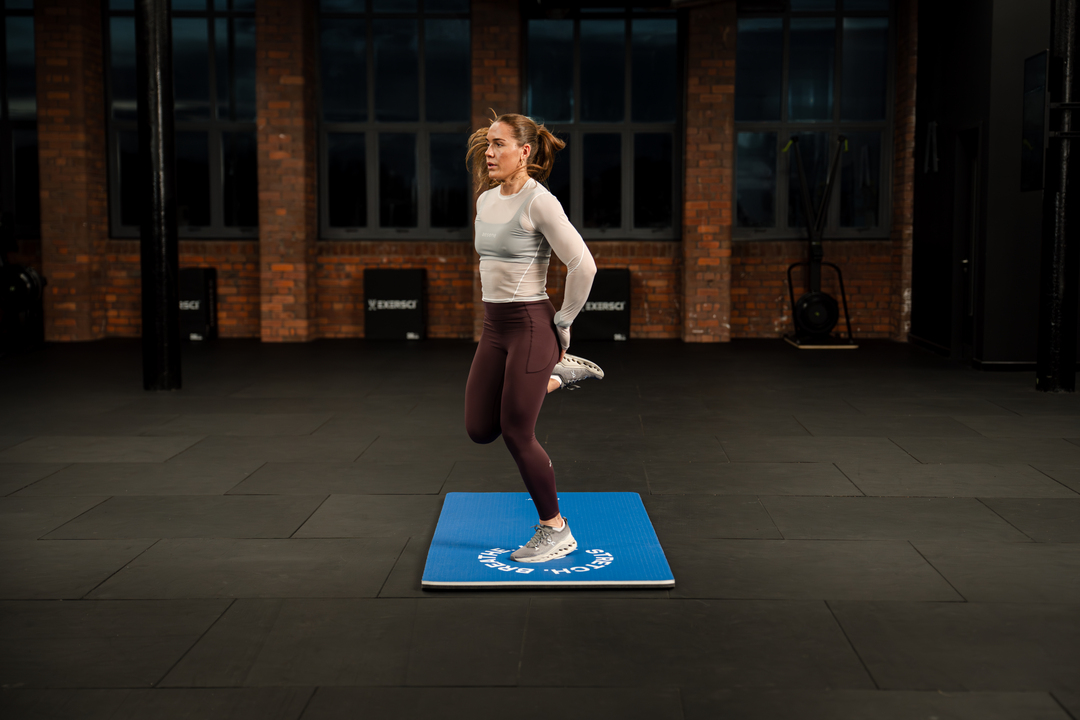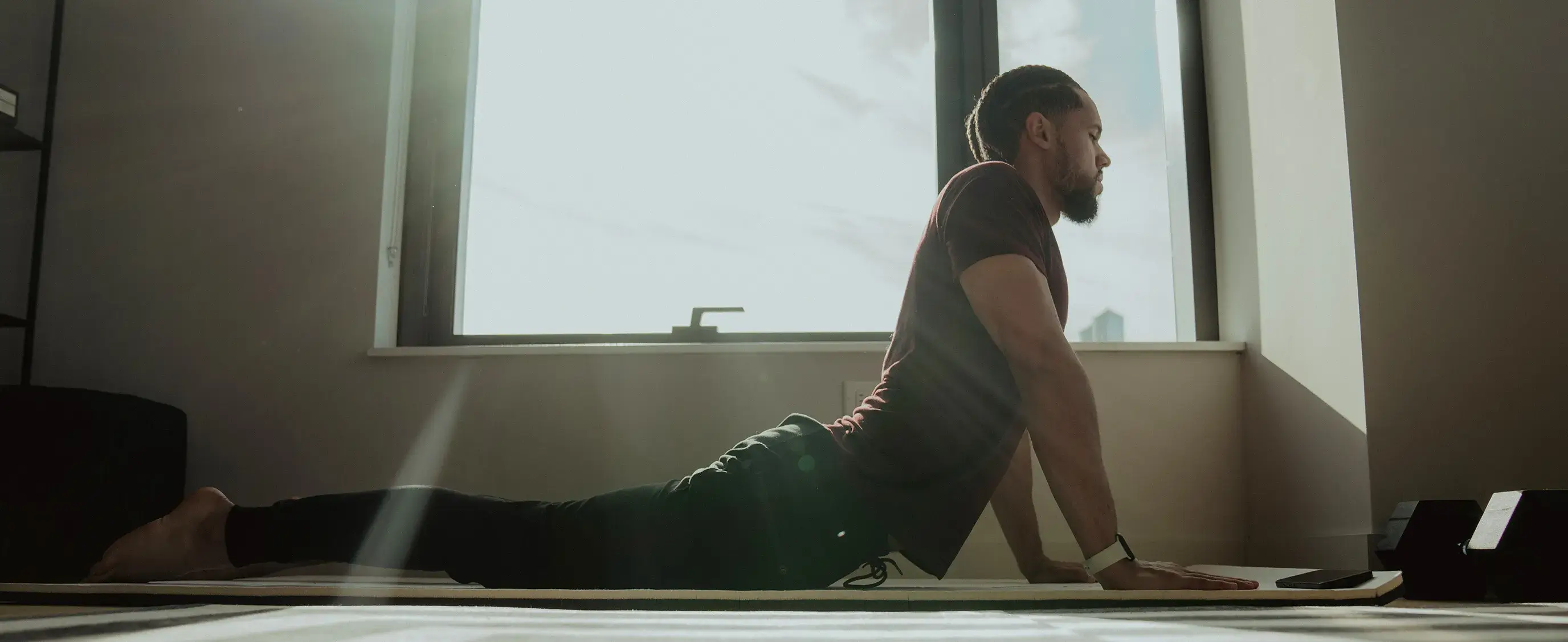Have you ever felt stiff and achy after sitting for too long? Or you've realized that you can't move as well as you used to. These scenarios are all too common, especially as we get older. But they can happen to anyone, especially those who are inactive or don't regularly implement mobility exercises into their routine. Mobility work is essential for everyone, regardless of age or fitness level. That's because it helps improve flexibility, range of motion, and overall movement quality. A mobility exercise routine can help you move, feel, and perform better in your workouts. And the best part? With the right plan, you can learn how to get flexible fast. In this article, we'll provide you with everything you need about mobility routines to get you started on the path to better movement today.
Pliability's mobility app can help you get the most out of your routine by teaching you how to integrate mobility exercises into your life effectively. The focused routines take just minutes to complete and can enhance your flexibility, strength, and overall movement quality.
What is Mobility Training & Why it Should Become Part of Your Routine?
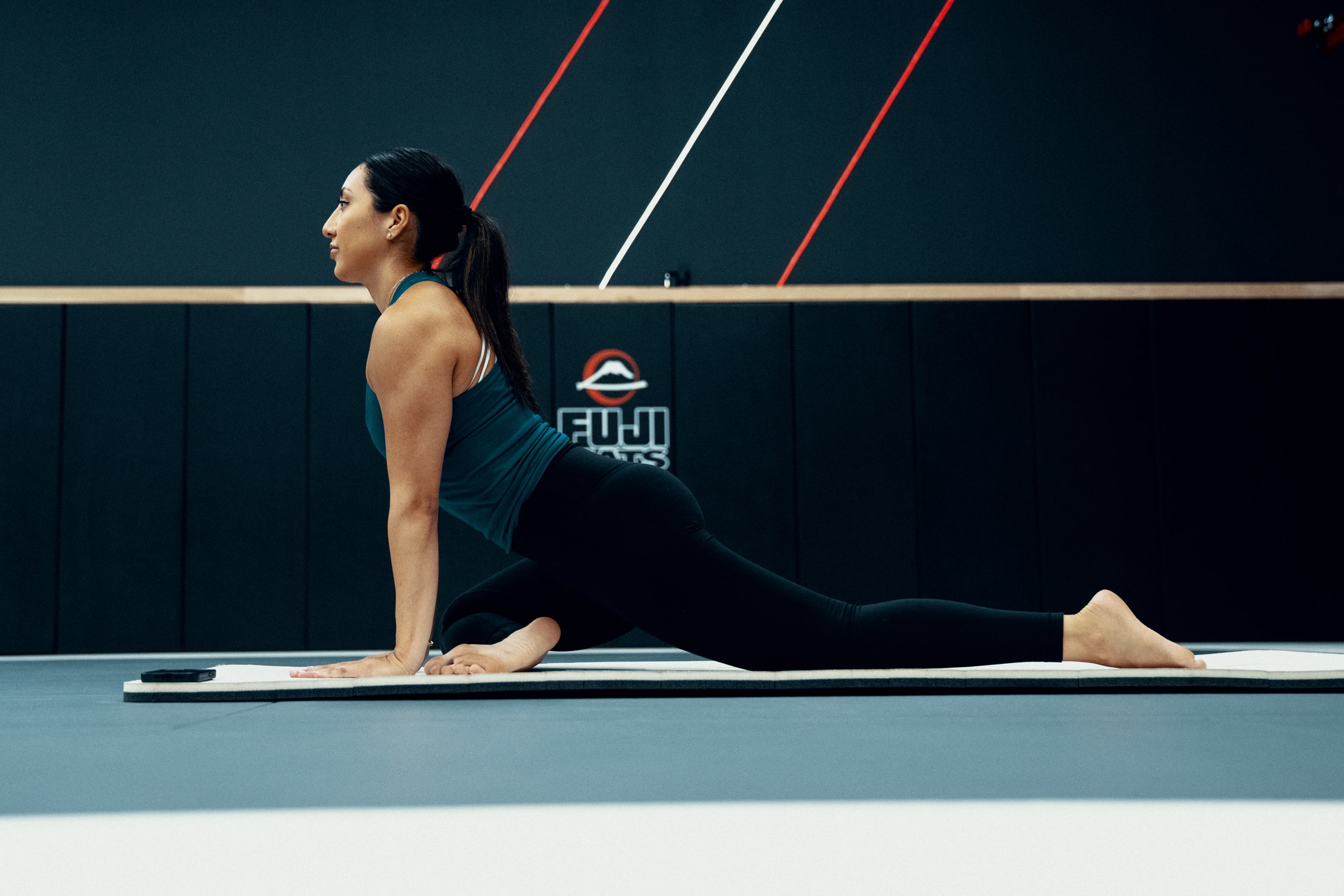
Mobility training combines exercises that increase your body's range of movements and motions. These include:
- Flexibility
- Balance
- Pliability
- Strength
The full combination is the best way to avoid injury. One great thing about mobility training is its diversity. You can easily adapt it to meet your needs and your routine, from a pre-workout mobility exercise to a 10-minute full-body workout to a complete yoga workout.
What are Common Mobility Issues?
Here are the three most common areas that you see when it comes to people lacking mobility:
Thoracic Mobility
Thoracic spine mobility is an extremely important and oftentimes overlooked component of various dysfunctions. Poor thoracic mobility can affect your:
- Shoulders
- Neck
- Lower back
- Hips
Very easily. Our modern sedentary lifestyles mean poor thoracic mobility is very common. Sitting for long periods, hunched over computer screens and smartphones, has placed us in a flexed thoracic position and led to a relatively stiff forward posture. We are becoming a group of modern-day Quasimodos, which means we lack thoracic extension and rotation.
A lack of thoracic mobility is a precursor to neck, shoulder, and lower back pain. Being stuck in excessive thoracic flexion (known as Kyphosis) means you will likely compensate and try to find extra range via lumbar (lower back) extension. This can cause pain, overload the lumbar spine structures, and increase injury risk. Poor thoracic mobility will also limit your ability to train overhead movements effectively:
- Presses
- Chins
- Pulldowns
Good luck trying to get big, strong shoulders and back without being able to train those movement patterns properly.
Shoulder Mobility
Taking your shoulder into full flexion (arms overhead) is crucial to train overhead movements safely. Full shoulder flexion while maintaining external rotation of the upper arm is optimal. Most people lack this range and compensate by arching their lower back to get into the overhead position.
This places a lot of strain on the lower back. Poor thoracic extension often drives this lack of shoulder mobility, creating faulty mechanics to reach overhead. By addressing thoracic extension, you can clear up many shoulder mobility issues. You are killing two birds with one stone.
Hip Mobility
A lack of hip mobility means you will use compensatory strategies to hit certain ranges. Doing so risks exposing other body parts to excessive strain. Faulty movement mechanics caused by insufficient hip mobility can drive up or down the chain, causing issues.
A lack of hip mobility has been shown to contribute to lower back pain, hip osteoarthritis, groin pain, knee injuries, and ankle pain. If you develop adequate hip mobility, you can progress to properly challenging your quads, hamstrings, glutes, and adductors in training.
What’s the Difference Between Mobility and Flexibility?
Mobility is “proprioception,” our perception and awareness of our body’s positions and movements. Mobility training includes a range of exercises designed to increase your range of motion, control muscles surrounding each joint, and help you move more actively.
Flexibility is the stretching and lengthening of our muscles. When you can increase the stretch and length of your connective tissue, you can help your body through a full range of movements without causing injury, stiffness, and pain.
Why Mobility Training Should Become Part of Your Routine
Mobility training is necessary if you want to:
- Run faster
- Jump higher
- Squat lower
- Lift weights more efficiently
- Achieve your ultimate fitness goals
Incorporating mobility and flexibility is vital to gaining peak fitness and functioning. What happens if you don’t make this training part of your routine? If a certain part of your body has less mobility, you may be overcompensating when using other muscles and joints: that’s how you get injured.
Think of a damaged knee when we have weakening and pain in one knee. We naturally find ourselves increasingly using the uninjured knee. Mobility training helps prevent muscles from becoming tight and immobile and suffering from an all-around lack of movement again, leading to potential injury. We can only get away with poor and limited mobility for a certain length of time before our body tells us we’ve had enough.
Examples of Mobility Workouts
Now we've unpacked what mobility workouts are all about, let's explore some examples of mobility exercises to incorporate into daily life. Mobility exercises, as we now know, focus on enhancing the mobility of different parts of the body, from shoulders and hips to ankles. Here are a few simple exercises to get started:
- Lunges: Excellent for improving hip mobility and strengthening your lower body, lunges are a strong foundation for any mobility routine. Stand up straight, step forward with one foot, and bend your knees until they form a 90-degree angle. Push back up and switch to the other leg. There is no need to rush. Slow, deliberate movements are just as valuable.
- Arm Circles: Arm circles help warm your shoulder joints and improve your range of motion. Stand with arms extended to the sides and make small circles with your arms, gradually increasing the size. Again, slow and steady wins the race here. There's no first-place prize!
- Cable Hip Extensions: This exercise requires a cable machine. Set the cable to its lowest height and attach the VELCRO® cable loop to one ankle. Stand facing the machine, holding on with your hands to steady yourself. Standing on your leg not looped to the cable, slowly and steadily pull your ankle away from the machine.
- Butterfly Stretches: Butterfly stretches are great for increasing the mobility of your legs and hips. Sit on the floor with the soles of your feet pressed together in front of you. Lean forward towards your feet, and use your elbows to press your knees gently towards the floor.
The Benefits of a Mobility Routine
Curious about the specific advantages mobility workouts add to your daily routine? Here are some highlights of why mobility matters:
- Improved Joint Health and Flexibility: Mobility workouts improve joint health and flexibility. They maintain joint health by promoting circulation, reducing stiffness, and preventing degeneration. Increased flexibility means you move more freely and comfortably daily.
- Enhanced Muscle Function and Performance: Mobility workouts enhance muscle function by optimizing length-tension relationships. What exactly does that mean? You'll build muscle strength and also gain better coordination and control.
- Reduced Risk of Injuries and Pain Relief: A regular mobility routine can help minimize the risk of injury, especially when combined with strength and conditioning programs. It can also provide relief from chronic pain and discomfort, making daily life much easier.
- Better Posture and Balance: Mobility workouts often include exercises that target core muscles, promoting better posture and balance. Maintaining good posture looks better and helps reduce the risk of developing musculoskeletal issues as you age.
- Increased Mind-Body Connection: Mobility exercises make you more attuned to your body's movements and sensations. This heightened mind-body connection enhances your exercise experience and carries over to everyday activities.
Related Reading
- Does Stretching Help You Lose Weight
- How to Release Tight Muscles
- Is Stretching Good for Arthritis
- Is Yoga Good for Stretching
- Morning Stretching Routine for Beginners
- Benefits of Stretching in the Morning
- Mobility Stretching Routine
- Daily Stretch Routine for Flexibility
- Daily Stretching Routine for Men
10 Steps to Your Perfect Mobility Exercise Routine

1. Assess Your Mobility for a Customized Approach
To create a personalized mobility routine, it’s crucial to understand how you currently move. Working with a certified trainer or physical therapist, you can get a comprehensive Functional Movement Screen, or FMS, to assess professional athletes. You can also do a self-assessment using simple, functional exercises to evaluate your range of motion and identify limitations.
To self-assess, stand in front of a mirror and perform a variety of basic movements that incorporate the upper and lower body, such as squats, lunges, and arm raises. Note any movement restrictions, imbalances, or feelings of discomfort. For more comprehensive results, assess yourself by doing exercises from all six categories of functional human movement:
- Squatting
- Hinging
- Pushing
- Pulling
- Rotating
- Core stabilization (see video above)
Tip: Record yourself from different angles during your assessment for a better view. Save the recordings to use for comparison as you progress in your program.
2. Identify Your Mobility Limitations to Target Areas of Improvement
The limitations revealed in your assessment offer areas of opportunity for improvement. Identify and prioritize areas based on factors such as how often you rely on that particular area of your body to perform similar movements in daily life, the degree of limitation or imbalance you experience, and the level of discomfort you feel.
If you feel acute pain, seek assistance from a healthcare professional before proceeding. Common areas offering opportunities for improvement include the hips and lower back.
Tip: If your balance was challenged during the assessment exercises, I recommend further assessment with a basic one-leg stand test.
3. Set Clear Goals for Your Mobility Routine
Setting clear goals provides direction for your mobility routine. Is there a particular task or daily activity that enhanced mobility would enable you to do better? Define two or three actionable goals related to the areas needing improvement identified in the preceding step.
For example, if you found limitations in your ability to squat and you are an avid golfer who would like to improve mobility to play better, consider framing one of your goals like this: I will improve my hip mobility and knee stability to be able to squat down to pick up my ball, swing my club and walk the course with greater ease.
Tip: Setting specific goals relevant to your lifestyle will allow you to recognize your progress in daily activities more efficiently, increasing your motivation.
4. Choose the Right Exercises for Your Routine
Your mobility routine should include eight to 12 exercises that allow your body to practice a full range of motion while also zeroing in on the target areas identified in your assessment.
To address total-body mobility, focus on a variety of exercises that get you moving in all directions and take you through all three planes of motion: sagittal (forward and backward), frontal (side to side), and transverse (rotational). Identify exercises specific to your target areas and goals. For instance, in the example provided in step three, you would want to include hip mobility and knee stability exercises to improve your squatting and golf game, such as lateral lunges, reverse lunges, and box squats.
Tip: You can search online for exercises specific to your needs and goals. For example, in the same example above, you would search “hip mobility and knee stability exercises to improve squatting.” Just vet any resources to be sure they are reputable.
5. Create a Routine That Fits Your Lifestyle
Personalized mobility is much more effective and efficient than one-size-fits-all training, so you do not need to spend weekly hours on it. With the right mobility plan, you can achieve results in less than an hour a week spread out over days. You could practice a 10-minute routine three times per week or five times per week while repeating two or three targeted exercises in shorter one- or two-minute spurts daily.
Tip: Your personalized mobility routine can be the perfect warmup before any other exercise program, such as strength training or cardiovascular activities.
6. Incorporate Mobility Exercises Into Daily Activities
Your mobility training should be designed to fit seamlessly into your daily life to avoid any barriers to consistency. One of the best ways to do that is through habit stacking. This technique involves performing the desired new habit just before, during, or after an ingrained habit and pairing them together to make maintaining the new habit easier.
To do this:
- Stack your targeted mobility exercises with daily habits such as brushing your teeth, making the bed, or putting on shoes.
Tip: Make stretching on your couch part of your TV-watching habit.
7. Stay Consistent to Improve Mobility Over Time
Consistency is the most critical factor in seeing improvement. Set reminders on your smart devices and take the habit-stacking advice from the preceding step to integrate your mobility exercises into your daily routine. If you struggle with accountability, get a friend to practice with you.
Tip: Be easy on yourself if you miss a day or two. Recommit and start fresh the next day.
8. Track Your Progress to Stay Motivated
Monitoring your improvements provides motivation and important insights. Use a digital diary or a notebook to track changes in your range of motion, imbalances, sensations, etc.
Tip: Reassess yourself every six to eight weeks, referring to your original assessment recording to measure changes.
9. Adjust Your Mobility Routine as Needed
As you progress, adjusting your routine based on your evolving needs is essential. If you hit a plateau, do not hesitate to modify your exercises and/or seek advice from a professional.
Tip: Be sure to update your goals as you progress or make new goals more appropriate as you incorporate changes in your lifestyle.
10. Celebrate Your Successes Along the Way
Noticed any increase in range of motion? Celebrate your achievements, no matter how modest they seem, as they signify momentum. Simply sticking to your routine consistently is cause for celebration.
Tip: Rewarding yourself with small gifts or indulgences for hitting milestones can reinforce positive behavior and motivate you.
Related Reading
- Hamstring Stetches
- Quad Stretches
- Ballistic Stretching
- Thigh Stretches
- Chest Stretches
- Types of Stretches
- Dynamic vs Static Stretching
- Best Apps for Stretching
- Best Mobility Stretches
- Best Lower Body Stretches
- Best Stretches for Athletes
- Stretches for Arms
A Full-Body Mobility Exercise Routine That Takes Just 19 Minutes

Warm-Up: Dynamic Stretching (5 Minutes)
Dynamic stretching warms the body and gets the blood flowing to the muscles used in your mobility routine.
- 1. Arm Circles: Stand with your feet hip-width apart and extend your arms to the sides. Make small circles with your arms, gradually increasing the size for 1 minute.
- 2. Leg Swings: Hold a sturdy support and swing one leg forward and backward, then side to side for one minute. Repeat with the other leg.
- 3. Torso Twists: Stand with your feet shoulder-width apart and gently twist your torso from side to side for 1 minute.
- 4. Neck Circles: Carefully rotate your neck in a circular motion, clockwise and counterclockwise, 30 seconds in each direction.
The 9-Minute Full-Body Mobility Circuit
This circuit targets different areas of your body with simple yet effective exercises. Practice each movement for 1 minute before moving to the next one.
Upper Body Movements
- Shoulder Rolls: Stand with your arms relaxed at your sides and roll your shoulders forward and backward.
- Arm Swings: Extend your arms straight before you and swing them backward and forward.
- Neck Tilts: Tilt your head to the left and right, stretching your neck muscles.
Core and Back Movements
- Cat-Cow Stretch: On the floor on your hands and knees, arch your back upward (cat) and then arch it downward (cow). Repeat slowly with the breath.
- Plank Twists: Start in a plank position and rotate your hips to one side and then to the other.
- Child's Pose: Kneel on the floor with big toes together and knees wide. Sit back on the heels and stretch the arms forward for a gentle back and shoulder stretch.
Lower Body Movements
- Hip Circles: Stand with hands on the hips and rotate the hips in a circular motion.
- Ankle Circles: Sit on the floor with legs extended and rotate ankles in both directions.
- Toe Touches: While standing, bend at the waist and reach for the toes to stretch the hamstrings.
Cool-Down: Static Stretching and Breathing Techniques (5 Minutes)
After the circuit, take 5 minutes to cool down with static stretching and deep breathing:
- Quad Stretch: Stand and gently pull one heel toward the glutes to stretch the quadriceps. Repeat on the other side.
- Hamstring Stretch: Sit on the floor with one leg extended and the other bent. Reach for the toes to stretch your hamstrings. Repeat on the other side.
- Calf Stretch: Stand facing a wall, place one foot behind you, and press the heel into the ground to stretch the calf muscle. Repeat on the other side.
- Deep Breathing: Finish with a few moments of deep breathing to relax both body and mind. Inhale deeply through your nose, hold for a moment, and exhale slowly through your mouth.
Related Reading
- Best Workout Apps for Beginners
- Non Yoga Stretches
- Best Fitness Apps for Men
- Best Free Workout Apps for Women
- Best Bodybuilding App
- Workout Planning Apps
- Bend App Cost
- Best CrossFit Apps
Improve Your Flexibility with Our Mobility App Today | Get 7 Days for Free on Any Platform
Pliability app can help people recover from:
- Injuries
- Surgeries
- Chronic pain
The mobility routines are designed to improve flexibility and range of motion, helping the body move better and alleviate discomfort. If you’re feeling limited by pain or your ability to move, Pliability aims to complement your fitness routine and help you move better.
